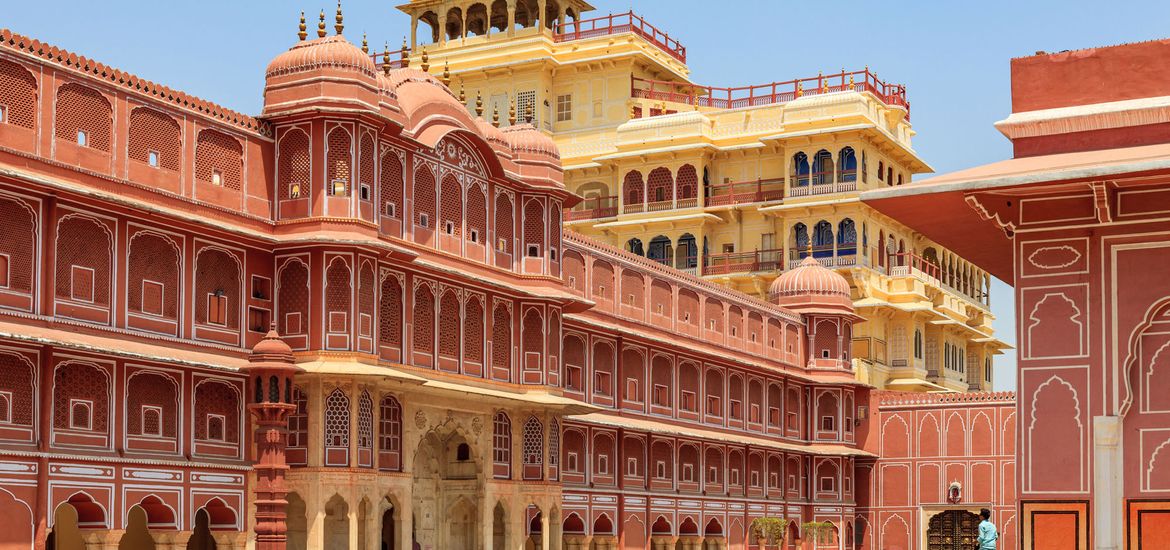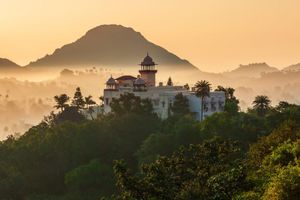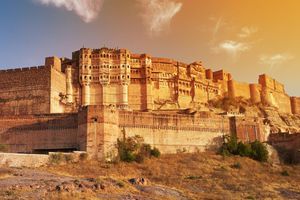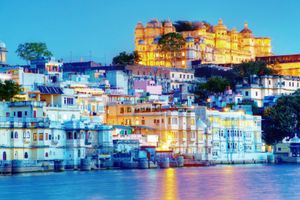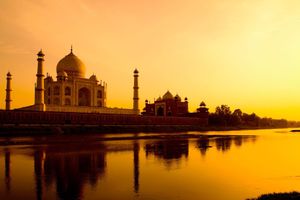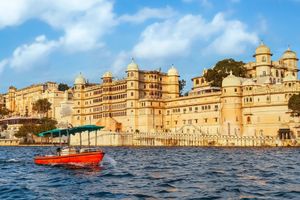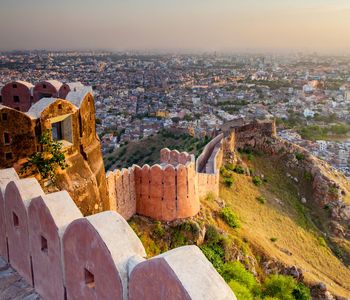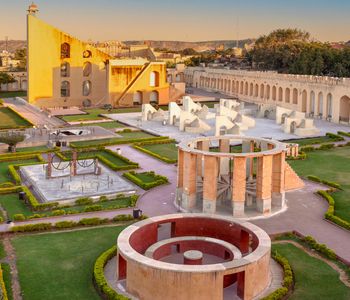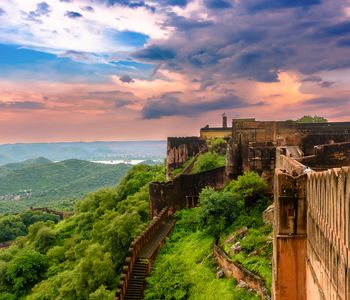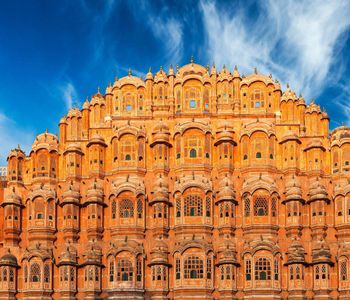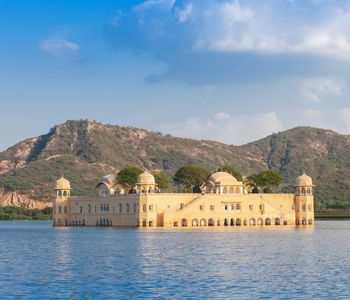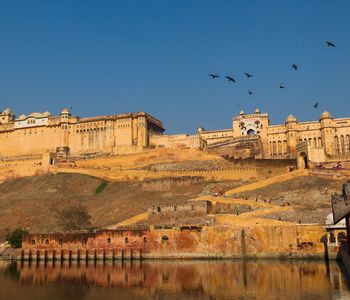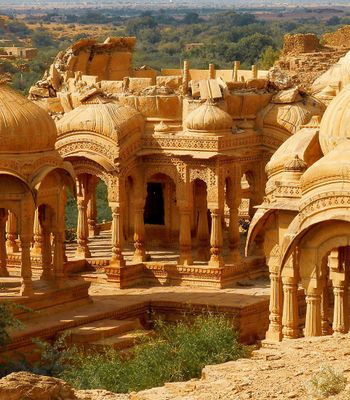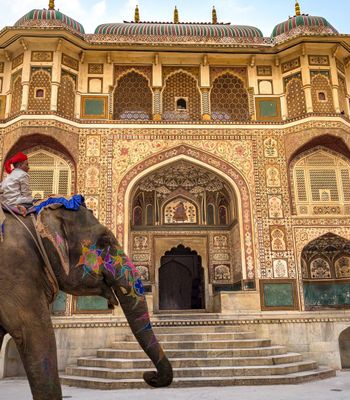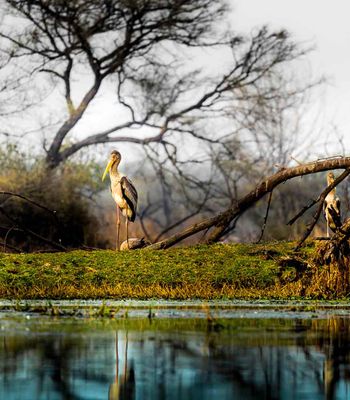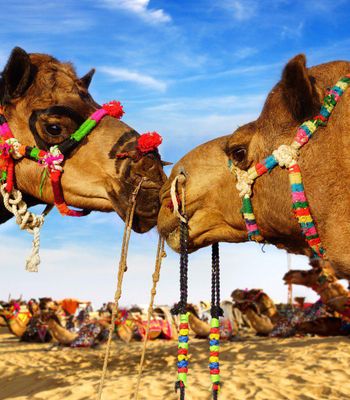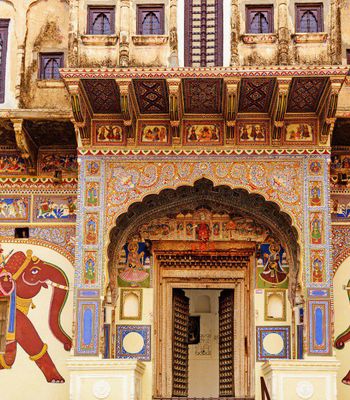Constructed in the early 18th century, the City Palace is a remarkable site for both history and art lovers, for it combines European, Mughal, and Rajput architectural forms. A section of the palace remains the private residence of Jaipur’s royal family, adding to its unique appeal.
From grand courtyards and elaborate frescoes to centuries-old relics, a trip to the City Palace provides a thorough exploration of Jaipur's royal past.
A Glimpse into History
Shortly after establishing Jaipur as India's first planned city, Maharaja Sawai Jai Singh II commissioned the City Palace between 1729 and 1732. Built to be the royal dwelling and administrative hub, the palace combined Mughal elements with classic Shilpa Shastra ideas. Later leaders enlarged the complex adding pavilions, halls, and courtyards.
One of the most important moments in the history of the palace was in 1876 when Maharaja Ram Singh II directed the whole city—including the palace—to be painted terracotta pink in order to greet the Prince of Wales. This tradition continues today, earning Jaipur its nickname—the Pink City.
Architectural Grandeur
Featuring finely crafted courtyards, balconies, domes, and archways, the City Palace is a remarkable mix of Rajput and Mughal architecture. Reflecting the Navagraha (nine planets) mandala, a fundamental component in Indian architectural traditions, the complex follows a well-designed grid structure.
The palace's climate-responsive design is among its most remarkable qualities. While water channels derived from neighbouring Jal Mahal help control temperature, jharokhas (latticed windows) let cool airflow into the chambers.
With its towering Rajput-style façade covered in Mughal pietra dura inlays, the Tripolia Gate, one of the principal entrances, exemplifies this mix of styles. Inside, the walls are decorated in frescoes representing Hindu deities, while intricate jali work (stone lattice screens) lends a Mughal artistic touch.
Exploring the City Palace
Several major attractions housed at the City Palace provide a window into Rajasthan's imperial past. Here’s a closer look:
Chandra Mahal
Within the compound, the most notable construction is the seven-story Chandra Mahal. Although the Jaipur royal family still resides there, some floors are open to guests. From Rajputana murals to European-style chandeliers, every floor of the palace displays a different architectural style.
Pitam Niwas Chowk
Each of the four seasonal gates in this lovely courtyard—the Peacock Gate for spring, the Lotus Gate for monsoon, the Green Gate for summer, and the Rose Gate for winter reflects a distinct season. These intricately decorated gates serve as stunning backdrops for photographs.
Mubarak Mahal
Originally constructed as a guesthouse for foreign dignitaries, Mubarak Mahal today contains a textile museum showcasing royal garments, including an angrakha (robe) worn by Maharaja Sawai Madho Singh I, weighing almost 250 kg!
Bhaggi Khanna & Sileh Khanna
While Sileh Khana shows an amazing array of royal weapons, including gauntlet swords used by female guards during the 1857 uprising, Bhaggi Khana features a collection of vintage carriages, including a 1940 Rolls-Royce Phantom III, for those interested in royal artefacts.
Light and Sound Show
Visitors can savour an immersive sound and light show in the evening, whereby images of Jaipur's regal past are projected onto the palace walls. Archival voice recordings of former Maharajas really help to bring history to life in a quite wonderful manner.
Heritage Astrology Sessions
The palace provides traditional astrological sessions carried out with authentic Jantar Mantar instruments for a singular experience. These seminars offer an understanding of ancient Vedic astrology and birth chart readings.
When to Plan Your Visit
Visiting the City Palace is ideal during November and February when the temperature falls between 15°C and 23°C and the weather is cool and pleasant. Important cultural events such as the Jaipur Literature Festival in January and the Elephant Festival in March also coincide with this time and vividly bring the palace to life.
The palace is best visited early in the morning, around sunrise, to capture the golden glow of the Peacock Gate mosaics. Alternatively, take a full moon night heritage walk to see the palace lit by traditional oil lamps.
Getting to the City Palace
The City Palace is located in the heart of Jaipur and can be reached easily by different types of transportation. Here’s a quick guide:
By Air
Jaipur International Airport (JAI), approximately 12 km away, is the nearest airport. Prepaid taxis to the palace cost around ₹400–₹500.
By Train
Jaipur Junction (JP), the city’s main railway station, is just 4 km from the palace. Auto-rickshaws and cycle rickshaws offer convenient transport options.
By Road
Jaipur has a well-connected road network. If you’re travelling from nearby cities like Delhi, Agra, or Udaipur, you can take a bus or hire a car for a comfortable journey. The Rajasthan State Road Transport Corporation (RSRTC) operates frequent buses to Jaipur.
Royal Revelries: City Palace’s Festivals in Full Bloom
Several yearly events held by the City Palace provide a closer view of Jaipur's cultural legacy:
- Teej: The royal courtyards are adorned with swings, and traditional sweet-makers manufacture the well-known Ghevar, a must-try delicacy.
- Diwali: Thousands of oil lamps are ablaze throughout the palace, evoking the grandeur of the 1876 royal illumination by Maharaja Ram Singh II.
- Gangaur: A celebration of marital bliss and prosperity, Gangaur is traditionally observed within the Zenana (women’s quarters), where the Royal Family of Jaipur continues its age-old rituals, offering visitors a rare glimpse of the festivities at Sarvato Bhadra inside the City Palace.
- Dussehra: Celebrated as the victory of good over evil, this festival is when the Maharaja of Jaipur performs a ritualistic worship of weapons and royal vehicles, followed by a grand procession to Dussehra Kothi on Amber Road, where the sacred Shami tree is revered.
From the whispering silk curtains of the Zenana quarters to the great echoes of Diwan-i-Khas, every corner of the City Palace reveals a narrative. Whether your interest lies in architecture, history, or cultural exploration, this magnificent landmark offers an unparalleled journey through Rajasthan’s royal past.
